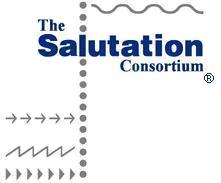
Salutation Scalability

Salutation Scalability
One value of the Salutation Architecture is scalability. And this is demonstrated in several
different areas.
The Salutation Architecture provides scalability in the 'size' of the Functional Unit Registry. The
minimum requirement is for the Registry to maintain information about the local Functional
Units. However, this can be extended (by increasing the amount of storage allocated to the
Registry) to registering information about remote FUs that are of importance to the local
environment. For example, if the local Salutation environment is a print server, the Registry may
include information about all the print Functional Units that have been discovered via Salutation
Capability Exchanges. The Registry may also serve as a network directory function, providing
information about all Functional Units encountered locally or remotely, regardless of the
Functional Unit type. In this case, one of the Salutation Managers on the network would be
designated as the central directory. It would have the responsibility of finding all Salutation
equipment and registering all discovered Functional Units. All requests by other equipment for
Salutation resources would be directed towards this Salutation Manager which would respond
accordingly.
The Salutation Architecture provides scalability through optional client/server support. Some
Salutation devices, applications, or services need only respond to capability requests, and never
request capability information from others. These device support only Salutation's Server
functions. This provides for a lighter weight implementation of the architecture.
The Salutation API set is optional for implementations. This is appropriate for devices which closely integrate the Salutation Protocol into their product implementation, without the need for application isolation. This level of implementation is targeted for entry level or low function devices.